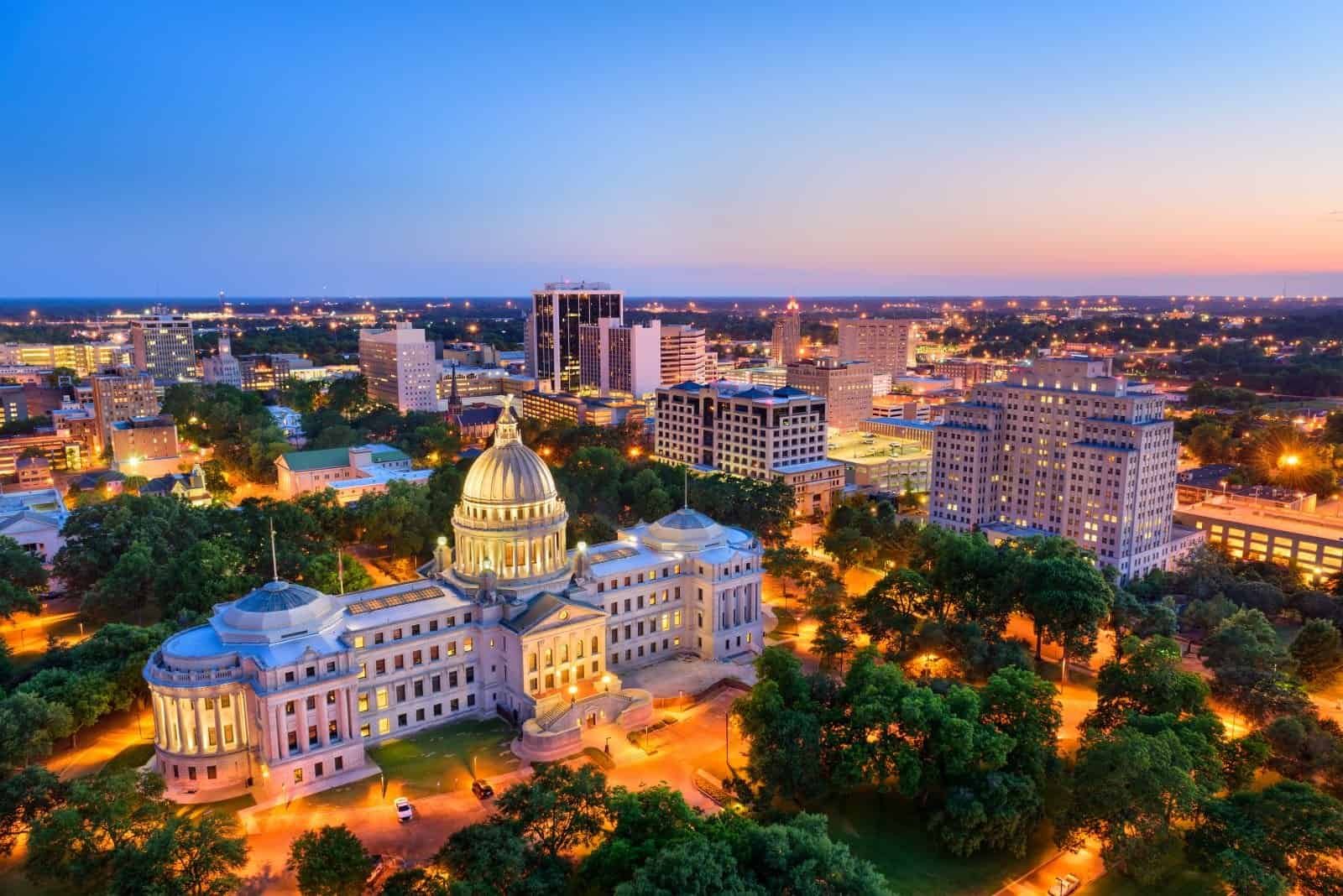The growth of each U.S. state significantly impacts the country’s overall economy. States like Washington and Texas flourish due to their diversified economics, forward-thinking strategies, and effective policies. Meanwhile, Mississippi and West Virginia face significant hurdles in their growth. Let’s explore the WalletHub ranking of the USA’s best and worst state economies in 2024.
10 Best State Economies of the U.S. in 2024
Washington

Washington tops the list of best-growing state economies, propelled by the substantial investment in the R&D sector, which has fueled the growth of its thriving tech industry. Tech giants like Microsoft and Amazon have boosted employment alongside robust manufacturing, aerospace, and defense sectors. The state GDP is $506 billion, with a strong employment growth rate of 2.5 percent. Additionally, the median income in Washington is $67,106, highlighting its economic strength. The state also benefits from a highly educated workforce, with over 32 percent of citizens holding bachelor’s degrees.
Utah

Utah is known for its beautiful landscape and boasts the second-best state economy in the U.S. The state has a median income of $65,977, a GDP of $167 billion, and an impressive employment growth rate of 3.4 percent. Utah’s young and talented workforce contributes to its success, with the lowest unemployment rate in the nation. Additionally, the state has seen a remarkable increase in venture capital investment, particularly in the tech and health sectors. The healthy labor market of Utah makes it the fastest-growing state for the civilian labor force. The state has more than 31 percent of citizens with a bachelor’s degree supporting continuous growth and innovation.
Massachusetts

Massachusetts boasts the best state economy due to its strong emphasis on education, healthcare, and technology. The state’s GDP is $615.15 billion, and the unemployment rate is 2.19 percent. The presence of prestigious universities such as Harvard and MIT helps it attract and produce top talents around the globe. Additionally, Massachusetts invests significantly in the R&D sector, fostering economic growth. With around 46 percent of the adults holding bachelor’s degrees, the state also topped the list of most educated states in the U.S.
Texas

Texas’s economy is growing strongly yearly due to its diversified economic base, robust policies, and significant investment in infrastructure. The state GDP stands at $2.5 trillion, with a growth rate of around 7.7% in the third quarter of 2023.
Key drivers of this economic boom include the growing tech and energy sectors, along with strong manufacturing and healthcare industries. The state boasts a median household income of $72,284, a low tax burden, and an affordable cost of living, making it one of the best places to invest. Additionally, more than 21 percent of individuals aged 25 years and older held a bachelor’s degree in Texas, supporting an educated workforce and sustained growth of the economy.
California

California gets the 5th spot on the best state economy due to its significant investment in the R&D sector and growing tech industry. The state boasts a GDP of $2.75 trillion, making it the world’s fifth-largest economy. It has an employment growth rate of 2.8 percent and a median household income of $67,739. California’s low unemployment rate, rising wages, and falling inflation make it an attractive business destination. Additionally, the state has a highly educated workforce, with over 31 percent of individuals holding bachelor’s degrees.
Colorado

Colorado’s economy is on the rise, driven by a strong emphasis on technology and innovation. The state boasts a GDP of $529.1 billion with a GDP growth rate of 5.8 percent in 2023. Colorado thrives with a low unemployment rate of 2.9 percent and a highly educated workforce of more than 42 percent of the population holding bachelor’s degrees. The continuous investment of the state government in energy, tech, and tourism sectors fosters this growth, making it the best-performing state economy.
Florida

Florida’s flourishing economy stems from its focus on diverse industries, including tourism, aerospace, and international trade. The state has a GDP of $1.6 trillion, with a GDP growth rate of 6.1 percent in 2023. It also topped the U.S. News & World Report’s Best States educational rankings. With an unemployment rate of 2.9 percent, it is second in job creation. Lack of income tax, strong infrastructure, and significant investment in the education and healthcare sector contribute to Florida’s economic success.
North Carolina

The growing economy of North Carolina is due to its strong infrastructure, investment in education, and ongoing commitment to diversity and innovation. The state has a GDP of $771 billion, a GDP growth rate of 4.6 percent in 2023, and an unemployment rate of 3.5 percent. Known for its excellent workforce and quality of life, North Carolina attracts innovative businesses and generates more jobs. Additionally, top-tier research universities such as Duke and UNC Chapel Hill contribute to a highly skilled workforce and sustainable economic growth.
Arizona

Arizona’s economy is prospering due to its strong population growth and favorable business environment. The state’s GDP stands at $ $510.6 billion, with a GDP growth rate of 4.9 percent in 2023. Arizona has an unemployment rate of 4.3 percent and a median Household Income of $72,581. The presence of major industries like Walmart, Kroger, and Banner Health contributes to generating more employment for people. Significant investments in healthcare, manufacturing, technology, and education support the state’s economic growth.
Maryland

The economy of Maryland is thriving due to its strong focus on information technology, telecommunications, aerospace, and defense sectors, as well as the significant presence of the federal government. The state’s GDP is $518.7 billion, with a GDP growth rate of 2.7 percent in 2023. Maryland boasts a low unemployment rate of 1.8 percent, leading to higher employment for most individuals. It is also a noted leader in biotechnology and had the most companies listed in the annual Fortune 500 list in 2023. Significant investment in the education sector, strategic location, and skilled workforce contribute to the state’s economic development.
Let’s look at the 10 worst state economies of the U.S. in 2024
Mississippi

Mississippi ranked as the worst state economy. It has the lowest number of jobs in the tech industry and labor force participation rate. The state’s median household income is the fifth lowest in the nation, and startup activity is the third lowest. Furthermore, the state has a poor healthcare system and insufficient infrastructure, hindering its overall economic development.
Hawaii

Hawaii ranks as the second worst state economy due to its significant dependence on the hospitality and tourism sector, high cost of living, and geographical isolation. The state also faces a labor shortage caused by its declining population. Despite having the lowest unemployment rate, the state struggles to generate individual jobs. With a GDP of $107.1 billion, it saw a GDP growth rate of 3.7% in 2023. Global travel disruption and economic downturns make Hawaii’s economy vulnerable, placing it in a worse position than other states.
West Virginia

West Virginia’s economy is struggling due to declining industries and low educational attainment. The state has the third highest poverty rate in the nation and a decreasing employment rate at -0.5 percent. With a GDP of $78 billion, only a little more than 19 percent of individuals hold a bachelor’s degree. Additionally, a poor healthcare system and low investment in the R&D sector further impede the state’s economic development.
Arkansas

Arkansas ranks fourth lowest in the worst state economy. The state has a low number of high-tech jobs, a high poverty rate, and poor educational quality, all of which hinder economic development. It also ranks lowest in providing high-quality healthcare facilities in the nation. Arkansas has a GDP of $172 billion, with a projected annual growth rate of only 0.7 percent in 2023. The unemployment rate is 3.3 percent, and the median household income is $56,335. These factors collectively contribute to making the Arkansas economy One of the worst-performing state economies in the nation.
Louisiana

According to Pew Research, Louisiana’s economy is suffering because of its heavy reliance on oil and tourism. The state also has a high crime and poverty rate, making it one of the least safe states in the U.S. Louisiana’s GDP is $294.8 billion, with an annual growth of 6.6 percent in 2023 and an unemployment rate of 3.5 percent. Additionally, the state struggles to improve healthcare facilities and educational systems, further hampering the state’s economic development.
Kentucky

Kentucky’s economy is struggling due to a lack of skilled workers, declining incomes in rural areas, and insufficient investment in technology, infrastructure, and education. The state’s GDP is $278.1 billion, with a GDP growth rate of 4.9 percent in 2023. The state is facing a high poverty rate of 16.5 percent and an unemployment rate of 4.3 percent. Additionally, the state lacks an adequate healthcare system and spends less on R&D, making it one of the worst state economies in the U.S.
Rhode Island

The slower economic growth of Rhode Island is attributed to its poor infrastructure, a lack of tech jobs, and an unfavorable environment for small business development. The state’s GDP is $77.8 billion, with a GDP growth rate of 3.9 percent in 2023. The unemployment rate is 4.1 percent and continues to rise. Rhode Island ranks poorly in almost every metric, including Annual Median Household Income, Exports per Capita, and Fast-Growing Firms.
Iowa

Iowa’s economy faces challenges due to its heavy reliance on agriculture, declining population, and limited industry diversification. The state has a GDP of $247.2 billion, with a GDP growth rate of 4.1 percent in 2023. The state’s median household income is $70,571, and the unemployment rate is 3.3 percent. The excessive dependence on agriculture makes it vulnerable to commodity price fluctuation and trade uncertainties.
Maine

Maine has struggled in several key essential metrics, placing it among the worst state economies. The state’s GDP is $90.9 billion, with a GDP growth rate of 4.9 percent in 2023. It has the lowest median household income and is experiencing growing housing inflation. The increasing cost of housing prevents workers from relocating to this state, resulting in a shortage of skilled workers. Additionally, the state ranks lowest in exports per capita and startup activity. All these factors contribute to its poor economic performance.
Ohio

Ohio has been ranked as one of the worst-performing state economies in the U.S. due to its declining manufacturing industry and insufficient investment in education and technology. With a GDP growth rate of 4.6 percent in 2023, the state’s GDP stands at $861.4 billion. Ohio has an unemployment rate of 3.6 percent and a median household income of 67,520 U.S. dollars—the state’s lack of innovation and infrastructure development positions Ohio as one of the worst state economies.
